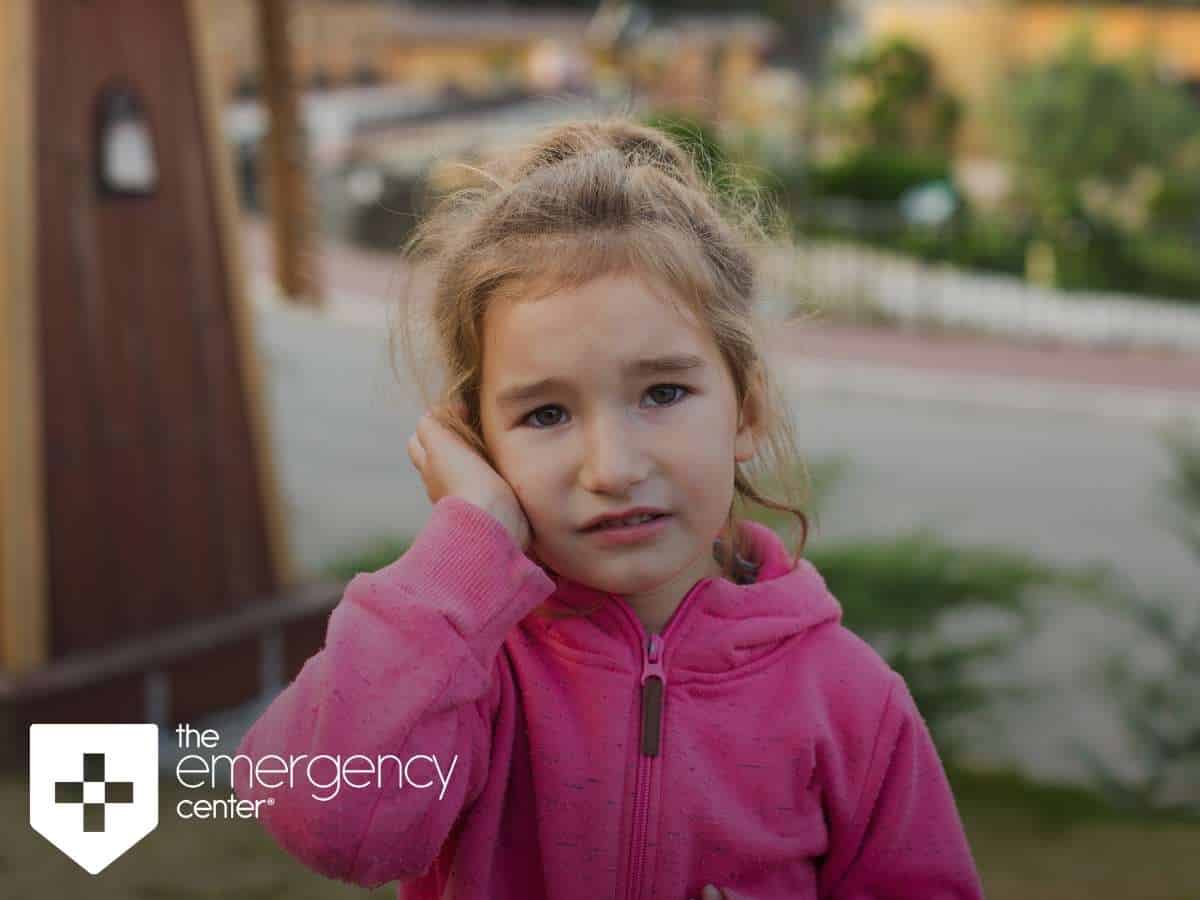Although ear infections are a relatively common occurrence (especially among kids), it is often difficult to know when you should go to the emergency room for an ear issue and when it can be addressed at home.
Sometimes it is tempting to take a wait-and-see approach, but left unaddressed, ear infections can lead to impairment of hearing or the need for more complex treatments down the road. And while not as common as infections, ear injuries are more likely to need immediate care.

The classic sign of an ear infection is an aching ear⎯though earaches can be caused by water in the ear or changes in air pressure. Regardless, it’s a type of pain that can come and go or stay constant, while taking many forms: from a sharp, focused pain to dull aching to a burning sensation in the inner or outer ear.
In addition to pointing to a possible ear infection, earaches can be caused by infections beginning in other parts of the body such as the sinuses.
Many earaches and minor ear infections can be treated at home, often using the combination of a warm compress on the affected ear and over-the-counter pain relievers and/or ear drops. These are usually the first line of treatment for ear pain that is suspected to be swimming-related (swimmer’s ear). However, go to The Emergency Center for fast care if these other issues appear:
Although it may seem counterintuitive, ear pain that suddenly stops can be a sign of a serious issue like a damaged eardrum, especially if it is accompanied by one of these other symptoms.
In addition to these ear-related symptoms, an earache may indicate another type of potentially serious infection. That is why getting to The Emergency Center for urgent care if an ear issue is accompanied by any of these other symptoms is important:
The ear is vulnerable to various types of injuries caused by punctures, loud noises, changes in air pressure, and other kinds of traumas. In fact, cotton swabs alone account for more than 10,000 ear injuries annually. Additionally, a blow to the ear, side of the head, or other types of trauma can happen, causing a range of injuries.
Minor cuts and scratches to the outer ear probably can be handled at home, but any injury that results in blood or another fluid coming out of the ear needs to be seen at The Emergency Center, as does any tearing of the outer ear.
Remembering to err on the side of caution when it comes to treating ear pain is an important way to keep your senses sharp.
The Emergency Center
San Antonio
11320 Alamo Ranch Pkwy
San Antonio, TX 78253
Phone: 210-485-3644
Conroe
4019 I-45 N,
Conroe, Texas 77304
Phone: 936-247-9457
Experiencing abdominal pain? Learn what it could mean by location and when to visit the…
Is your skin redness a sign of something serious? Learn about different types of skin…
Why are ER wait times so long? An emergency room physician explains key delays and…
Are you aware of the dangers of carbon monoxide? Learn prevention tips, symptoms, and how…
Enjoy winter sports safely! Learn how to prevent injuries & discover when to visit emergency…
Worried about ER visits this New Year’s Eve? Learn top safety tips to avoid common…